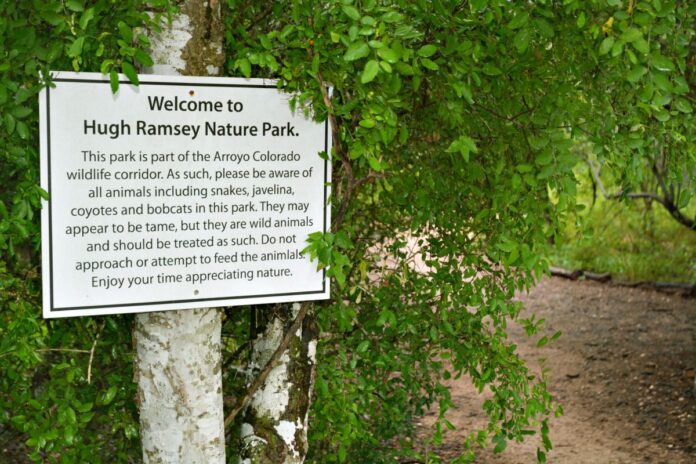HARLINGEN — Nothing quite invigorates one like being in the great outdoors and nearly stumbling over the most deadly snake in North America.
Gil Tello, a retired educator and administrator with the Harlingen Consolidated Independent School District, was hiking through McKelvey Park Saturday when he encountered one of the Valley’s most handsome — and most deadly — reptiles.
“I was walking in McKelvey Park and as I passed underneath the railroad bridge, I was walking back and I noticed a beautiful, beautifully-colored snake just slowly slithering across the path,” he recalled yesterday. “I thought it was going to pass, but no, it stopped.
“When I saw the red and yellow markings, I said, ‘whoa, this is a deadly one,” he added. “So I got maybe six feet away and it turned toward me, and it wasn’t moving, it wasn’t moving for anybody.”
The Texas coral snake is one of three U.S. coral snake species, called elapids. The others are the eastern coral snake found in Florida and the Southeast and the Arizona coral snake.
The secretive coral snake is not, as some insist, a rear-fanged snake. Its fangs are shorter than those of pit vipers such as rattlesnakes and they do not rotate on a movable maxillary bone like the fangs of pit vipers.
These physical traits mean coral snakes do not inject venom as effectively as pit vipers, even though their venom is more potent.
The only fatality from a coral snake bite in the past 50 years occurred in 2006 when Inocenio Hernandez-Hernandez, 29, of Bonita Springs, Florida, was bitten after he and a friend tried to kill the snake. After the bite, Hernandez did not seek medical attention.
Coral snakes in Texas may be far more widespread than people think. The species is so secretive and below the radar, they could be far more populous in the Valley.
At Hugh Ramsey Nature Park, for example, city officials have posted signs which read: “This park is part of the Arroyo Colorado wildlife corridor. As such, please be aware of all animals, including snakes, javelina, coyotes and bobcats in this park. They may appear to be tame, but they are wild animals and should be treated as such.”
Now we know, one coral snake is most assuredly living in McKelvey Park.
“I know there are a lot of kids and families that use the park for walking, so heads up if you’re there,” Tello said. “If you see something like that, get away from it. They want to be left alone.”
Tello said as he viewed the reptile, he recalled his early education in identifying snakes.
“I hope everybody knows the little rhyme we learned growing up: Red and yellow kills a fellow, red and black is a friend of Jack,” he said.
Tello said he hesitated just like the coral snake, but managed to snap a photo of the reptile before it packed things up and slipped into the grass next to the Arroyo Colorado.
“And then it went on its merry way,” he said.




